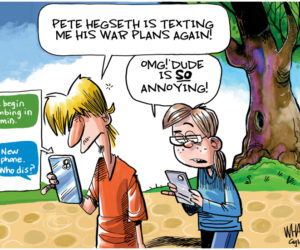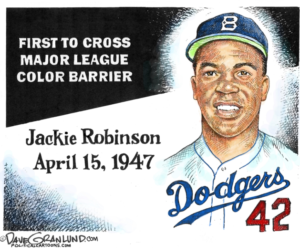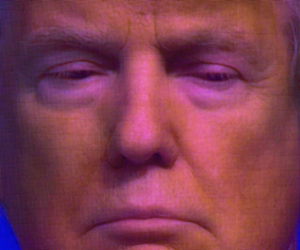
In The Age of Spiritual Machines, Ray Kurzweil predicts that by 2019 we will all be able to experience 3-D virtual reality through glasses and contact lenses that beam images directly to our retinas (retinal display). Coupled with an auditory source (headphones), we will be able to remotely communicate with other people and access the Internet.
These special contact lenses (available also as eyeglasses) will deliver “augmented reality” and “virtual reality” in three different ways:
- They can project “heads-up-displays” (HUDs) across the user’s field of vision, superimposing images that stay in place in the environment regardless of the user’s perspective or orientation.
- Virtual objects or people could be rendered in fixed locations by the glasses, so when the user’s eyes look elsewhere, the objects appear to stay in their places.
- The devices could block out the “real” world entirely and fully immerse the user in a virtual reality environment.
Thin, lightweight, handheld displays with very high resolutions will be the preferred means for viewing documents. Paper will be virtually eliminated. Our eyeglasses and contact lenses will be used for this same purpose, and all will download content wirelessly. For instance, a building’s directory, address and various and sundry other metadata will be superimposed over it. That functionality, perfect vision, or supervision, will be enabled with a blink of the eye.
IEEE’s Spectrum reports we’re right on track:
These visions (if I may) might seem far-fetched, but a contact lens with simple built-in electronics is already within reach; in fact, my students and I are already producing such devices in small numbers in my laboratory at the University of Washington, in Seattle [see sidebar, “A Twinkle in the Eye“]. These lenses don’t give us the vision of an eagle or the benefit of running subtitles on our surroundings yet. But we have built a lens with one LED, which we’ve powered wirelessly with RF. What we’ve done so far barely hints at what will soon be possible with this technology.
Conventional contact lenses are polymers formed in specific shapes to correct faulty vision. To turn such a lens into a functional system, we integrate control circuits, communication circuits, and miniature antennas into the lens using custom-built optoelectronic components. Those components will eventually include hundreds of LEDs, which will form images in front of the eye, such as words, charts, and photographs. Much of the hardware is semitransparent so that wearers can navigate their surroundings without crashing into them or becoming disoriented. In all likelihood, a separate, portable device will relay displayable information to the lens’s control circuit, which will operate the optoelectronics in the lens.
These lenses don’t need to be very complex to be useful. Even a lens with a single pixel could aid people with impaired hearing or be incorporated as an indicator into computer games. With more colors and resolution, the repertoire could be expanded to include displaying text, translating speech into captions in real time, or offering visual cues from a navigation system. With basic image processing and Internet access, a contact-lens display could unlock whole new worlds of visual information, unfettered by the constraints of a physical display.
Via CNet Health Tech.
For more future fun…
In Chapter 7 of The Age of Spiritual Machines, originally published in 1999, Kurzweil launches into a look back on his previous predictions by saying, “Now I get to toot my own horn”:
Chapter 9 is his 1999 predictions for this year, 2009. Here the full chapter online. Here the predictions summarized. Check it out and let me know how you think he did. I’m betting he’s still tooting that horn of his.
















